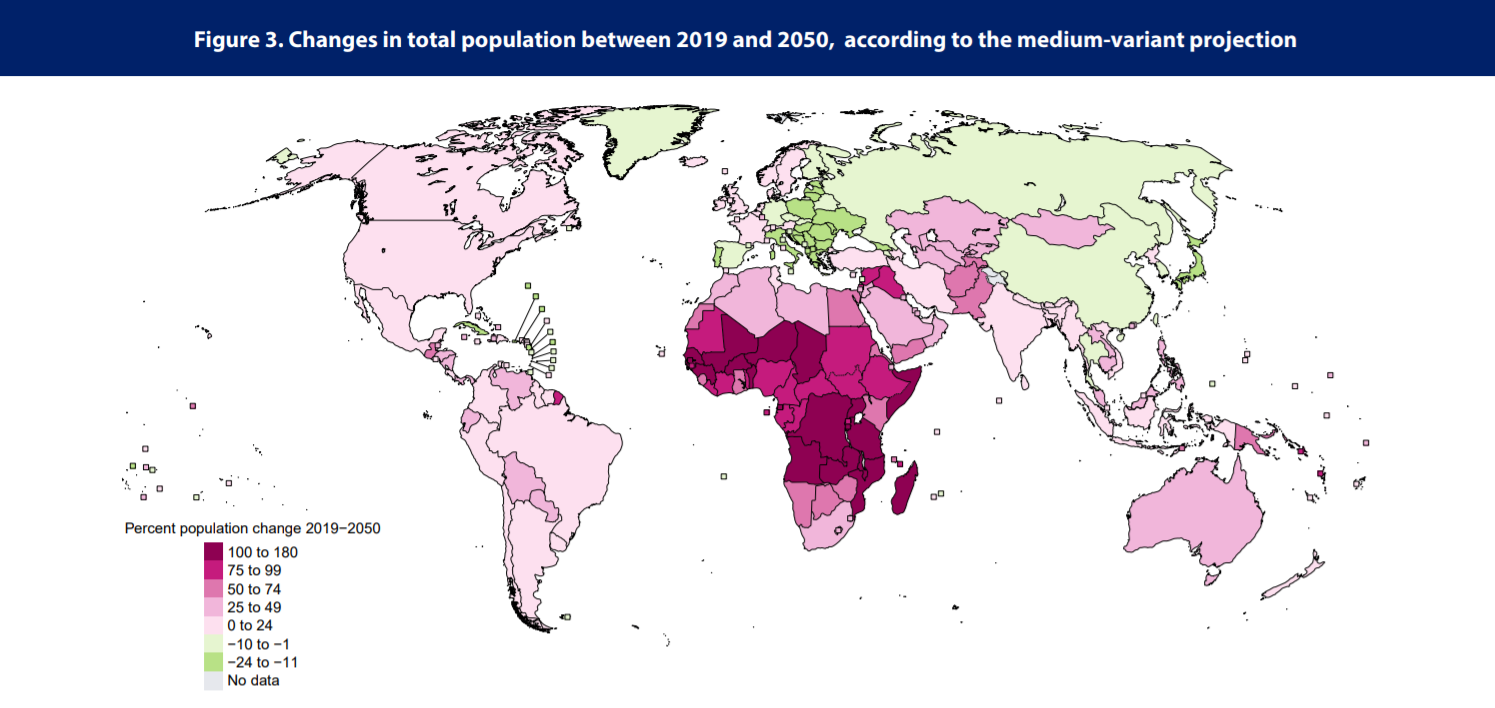Prague, Czech Republic – The population of Central Europe is set to decrease by nearly a third by the end of the century, while the world population is expected to grow to reach nearly 11 billion by that time and 9.7 billion in 2050.
These results stem from the World Population Prospects 2019 released earlier this week by the Population Division of the United Nations’ Department of Economic and Social Affairs.
Europe to experience sharp demographic drop
With its population due to double by 2050, Sub-Saharan Africa is the fastest-growing region in the world, compared to a nearly 50% increase in Northern Africa and Western Asia and a population expected to grow by roughly 25% in Central and Southern Asia.
According to U.N. projections, the European population will drop by 16% by the end of the century, from nearly 750 million people today to 710 million by 2050 and 630 million in 2100 (data for the wider European continent, Russia included).
Europe will be the only continent and sub-continent in the world to experience a wide-spread demographic decline.

Visegrad Group among fastest-shrinking regions in the world
Among V4 countries, the Czech Republic is the least vulnerable to demographic decline, with the U.N. expecting its population to drop from 10.7 million in 2019 to 10.3 million in 2100, a marginal 4% drop. The Czech Republic boasts the highest fertility rate in the region of 1.6 child per woman, but also a strong immigration that kept the population growing these past few years despite a negative natural balance.
The same thing doesn’t go for its Slovak neighbour. According to the U.N. World Population Projections 2019, Slovakia’s population might decrease by 30% by 2100, dropping to 3.8 million by that time compared to over 5.5 million today.
Hungary might experience a similar demographic decline in the following decades, with its population expected to drop from 9.7 million in 2019 to less than 6.9 million in 2100 (-29%). One in five Hungarians are currently aged at least 65, or more, with this rate set to skyrocket in the next decades, even though Hungarians are the most pessimistic nation in the world regarding old age, according to recent studies.
The worst expectations are for Poland, the most populous country in the region: U.N. demographic experts expect the Polish population to drop from nearly 38 million today to 23 million people in 2100, a staggering 40% drop.
Overall, population of the Visegrad Group countries would drop from roughly 63.8 million today to 44 million in 2100 (-31%). This expected loss of 20 million people by 2100 basically amounts to the current population of Hungary and the Czech Republic, combined.

Low birth and strong emigration: understanding the population decrease in Central and Eastern Europe
Some European regions are more vulnerable than others to a shrinking demographic trend: while Southern Europe (-35% by 2100) and Central and Eastern Europe (-27%) will be the most strongly hit, the Northern part of the continent’s population is due to increase over that same period of time (+14%) and Western Europe will only experience a marginal drop (from 195.5 million today to 189 million in 2100).
In Central and Eastern Europe, a region that struggles with low birth rates coupled with a strong emigration drive and strict immigration policies, every single country will see its population decline, according to the United Nations.
Apart from the Visegrad Group countries, the most significant drops will occur in Moldova (-50% by 2100), Bulgaria (-49%), Ukraine (-45%) and Romania (-39%).
Last year, U.N. projections had already highlighted that Central Europe was one of the fastest-shrinking regions in the world.

Pingback: How much does Central Europe spend in family benefits? – Kafkadesk
Pingback: Poland to scrap income tax for young workers – Kafkadesk
Pingback: Poland and Slovakia could lose over a quarter of their population by 2100 – Kafkadesk
Pingback: 150sec
Pingback: Polish population experienced sharp decline in 2020
Pingback: The Future Prospects of the V4 – 30 years of V4
Pingback: Visegrad countries launch “pro-family coalition”: What is it about? – Kafkadesk
Pingback: Demographic collapse – and what we can learn about natalism from Hungary and Poland | Conservative Home : Inside UK – INSIDE UK NET
Pingback: Demographic collapse – and what we can learn about natalism from Hungary and Poland | Conservative Home : UK NEWS 24 – UK NEWS 24
Pingback: Polish population experienced sharp decline in 2020 – Kafkadesk